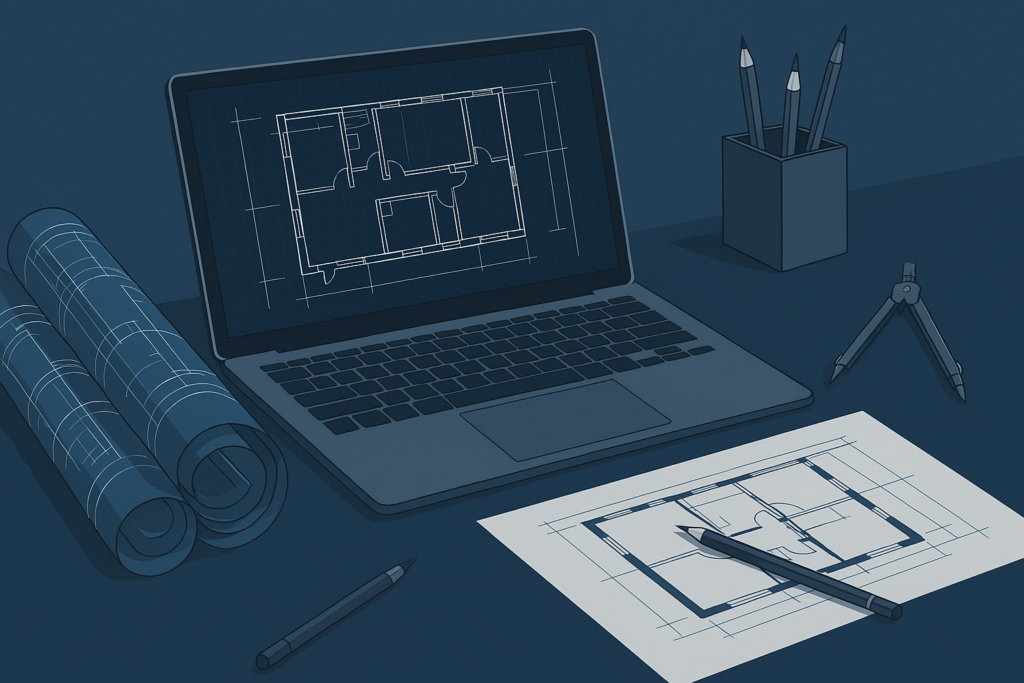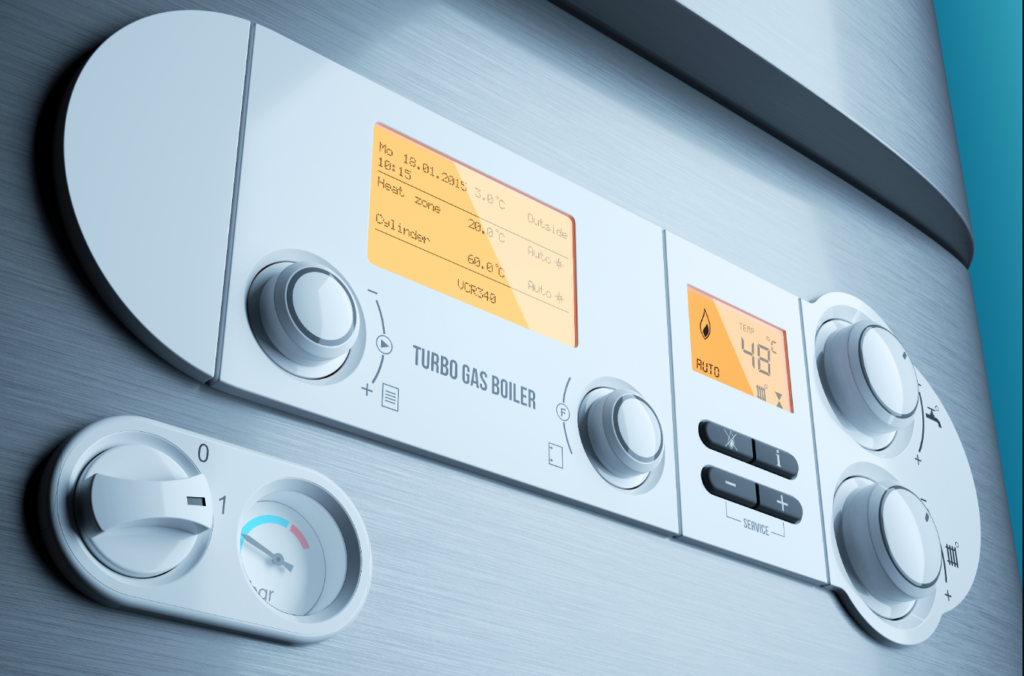Is your business missing out on significant energy savings because of outdated information? A recent study by the Clean Energy Council revealed that 68% of Australian businesses believe at least one major myth about commercial solar that prevents them from investigating it further. Meanwhile, businesses that have made the switch to commercial solar Sunshine Coast systems are enjoying energy cost reductions of 30-70% and wondering why they didn’t act sooner.
The commercial solar industry has evolved dramatically over the past five years. Technology has improved, costs have dropped by over 80% since 2010, and financing options have multiplied. Yet misconceptions from a decade ago still influence business decisions today. In this comprehensive guide, we’ll systematically dismantle the most common myths about commercial solar power Sunshine Coast installations, replacing fiction with facts so you can make informed decisions for your business.
Whether you’re a facility manager evaluating options or a business owner concerned about upfront costs, understanding the reality of solar panels commercial Sunshine Coast will reveal opportunities you may have overlooked.
Myth #1: Commercial Solar Is Too Expensive for Small to Medium Businesses
The Reality: Solar Has Never Been More Affordable
This might be the most persistent and damaging myth preventing Sunshine Coast businesses from reducing their energy costs. The truth? Commercial solar system Sunshine Coast installations have become remarkably accessible, with multiple pathways to adoption that don’t require massive capital outlays.
Average commercial solar system costs have decreased by 82% since 2010, according to data from the International Renewable Energy Agency. For a typical 30kW system suitable for small businesses, total installed costs now range from $25,000-$35,000 before incentives. When you factor in Small-scale Technology Certificates (STCs) that can reduce upfront costs by $8,000-$12,000, you’re looking at net investments starting around $17,000-$23,000.
But here’s what makes modern commercial solar Sunshine Coast truly accessible: flexible financing options. Many businesses now adopt solar through:
- Power Purchase Agreements (PPAs): Pay only for the electricity generated, often at rates 20-30% below grid prices, with zero upfront investment
- Solar Leases: Fixed monthly payments lower than current electricity bills, with maintenance included
- Commercial Loans: Specialized green energy loans with favorable terms specifically for solar installations
- Equipment Finance: Spread costs over 5-7 years with repayments typically lower than the energy savings generated
When evaluating affordability, experienced commercial solar installers Sunshine Coast teams help you analyze cash flow impact, not just sticker price. Most businesses discover that solar improves their monthly cash position from day one when financed appropriately.
Myth #2: The Sunshine Coast Doesn’t Get Enough Sun for Solar to Be Worthwhile
The Reality: Sunshine Coast Has Outstanding Solar Conditions
Some business owners worry that Queensland’s tropical climate with its summer storms and occasional overcast days makes solar unreliable. This couldn’t be further from the truth. The Sunshine Coast receives an average of 2,800+ hours of sunshine annually—well above the national average and among the best solar resources in Australia.
Solar power commercial Sunshine Coast systems generate electricity from daylight, not just direct sunshine. Even on cloudy days, panels produce 10-25% of their peak capacity, and partial cloud cover can still yield 50-80% generation. Modern solar panel technology has become increasingly efficient at capturing diffuse light, making consistent energy production reliable year-round.
Consider this data point: a properly designed 50kW commercial solar system Sunshine Coast typically generates 70,000-75,000 kWh annually in this region. That’s enough to offset the complete electricity consumption of many small to medium commercial facilities. The Australian Photovoltaic Institute’s PVOutput database shows thousands of local systems consistently performing at or above expectations, with some exceeding projected generation by 5-10% due to optimal local conditions.
Professional commercial solar installers Sunshine Coast like AHLEC Solar & Electrical conduct detailed shading analysis and use localized weather data to provide accurate generation projections specific to your site. These aren’t optimistic estimates—they’re conservative predictions based on decades of regional performance data.
Myth #3: Installation Will Disrupt My Business Operations for Weeks
The Reality: Professional Installation Minimizes Disruption
Many business owners postpone solar adoption fearing extended downtime, customer access issues, or operational disruptions. In reality, commercial solar power Sunshine Coast installations are designed to keep your business running smoothly throughout the process.
Typical installation timelines for commercial systems break down as follows:
Planning Phase (2-3 weeks): Happens entirely off-site with no impact on operations. Includes engineering design, permit applications, and equipment procurement.
Installation Phase (3-10 days): The actual on-site work period depends on system size but rarely exceeds two weeks even for large installations. Rooftop work occurs during business hours with minimal noise, and electricians schedule internal electrical work during low-traffic periods or after hours.
Grid Connection (1-2 days): Brief electrical outage (typically 2-4 hours) scheduled at your convenience, often during weekends or off-peak hours.
Experienced commercial solar installers Sunshine Coast teams understand business continuity requirements. They coordinate with your operations team, maintain clear access pathways, implement safety protocols that don’t impede customer access, and often complete installation in stages if your business requires uninterrupted service.
The planning and precision of professional installers means most businesses report that customers never even noticed installation was occurring. Your day-to-day operations continue normally while your energy future is being secured.
Myth #4: Solar Panels Require Constant Maintenance and Repairs
The Reality: Solar Systems Are Remarkably Low-Maintenance
The fear of ongoing maintenance costs and complications deters some businesses from adopting solar panels commercial Sunshine Coast solutions. The actual maintenance requirements? Minimal. Solar systems have no moving parts, no fluids to change, and no filters to replace—making them one of the lowest-maintenance additions you can make to your facility.
Modern commercial solar panels come with 25-year performance warranties and typically last 30-40 years with proper installation. Inverters—the components that convert DC power from panels to AC power for your business—generally carry 10-year warranties and have lifespans of 15-20 years. These aren’t theoretical numbers; they’re backed by decades of real-world performance data.
Annual maintenance requirements for commercial solar system Sunshine Coast installations consist primarily of:
- Visual Inspection: Check for physical damage, loose connections, or debris accumulation (1-2 hours annually)
- Panel Cleaning: Queensland’s occasional rain naturally cleans panels, though annual professional cleaning optimizes performance in dusty locations (costs $200-$500 depending on system size)
- Performance Monitoring: Most systems include online monitoring that automatically alerts you to any performance issues
- Electrical Testing: Periodic inspection of connections and safety systems (often included in installation warranties)
Many commercial solar installers Sunshine Coast offer comprehensive maintenance packages for $300-$800 annually that handle everything, giving you complete peace of mind. When you compare this to the $5,000-$15,000+ in annual energy savings most commercial systems generate, maintenance represents less than 5% of the financial benefit.
Myth #5: Solar Technology Will Improve Soon, So I Should Wait
The Reality: Waiting Costs You Money Every Month
This “waiting for better technology” mindset has cost Sunshine Coast businesses hundreds of thousands in foregone savings over the past decade. While solar technology continues advancing incrementally, today’s commercial solar Sunshine Coast systems are mature, highly efficient, and backed by proven performance records spanning decades.
Here’s the mathematical reality that demolishes the waiting myth: every month you delay represents lost savings. A business spending $2,000 monthly on electricity that could reduce bills by 60% with solar is losing $1,200 in savings each month they postpone installation. Over a year, that’s $14,400 in unnecessary expenses that will never be recovered.
Current solar panel efficiency ranges from 19-22% for quality commercial modules—more than sufficient to deliver excellent returns on investment. Yes, future panels might reach 24-25% efficiency, but waiting three years for a 10% efficiency improvement while paying full electricity rates means you’ve spent $43,200 on power bills unnecessarily. That far exceeds any incremental benefit from slightly better future technology.
Additionally, Australian federal incentives that reduce solar power commercial Sunshine Coast installation costs are gradually decreasing. The STC multiplier reduces annually, meaning the financial incentive to act now versus next year is substantial—often representing $2,000-$4,000 in additional upfront costs if you delay.
Reputable commercial solar installers Sunshine Coast provide performance guarantees ensuring your system delivers projected generation. If technology improves significantly, adding additional panels to expand capacity is straightforward. The best time to start saving was five years ago; the second-best time is today.
Myth #6: Our Building Type Isn’t Suitable for Solar Panels
The Reality: Most Commercial Buildings Can Accommodate Solar
Business owners sometimes assume their building won’t work for solar due to roof age, material, orientation, or structural concerns. Modern commercial solar system Sunshine Coast design has evolved to accommodate an incredibly diverse range of building types and configurations.
Professional assessments reveal solar solutions for nearly every scenario:
Metal Deck Roofs: Ideal for solar with multiple proven mounting systems that don’t compromise roof integrity.
Tile or Concrete Roofs: Specialized mounting hardware designed specifically for these materials ensures weatherproof installation.
Flat Roofs: Use tilted racking systems optimized for Queensland’s latitude, often with ballasted (non-penetrating) mounting options.
Limited Roof Space: Ground-mounted arrays, carport solar structures, or facade-mounted systems provide alternatives when roof capacity is constrained.
Older Roofs: If replacement is planned within 5 years, coordinate solar installation immediately after re-roofing. If roof life exceeds 10 years, solar can typically be installed and relocated during eventual roof replacement at minimal cost.
Shaded Areas: Modern system design includes microinverters or power optimizers that prevent shading on one panel from affecting entire system performance.
Commercial Lease Buildings: Multiple financing structures allow tenant installations with landlord agreements that benefit both parties.
Experienced commercial solar installers Sunshine Coast conduct comprehensive site assessments including structural engineering analysis, shading studies using specialized software, and roof condition evaluation. They identify solutions you might not have considered, often finding solar potential where businesses assumed none existed.
The question isn’t whether your building can support solar panels commercial Sunshine Coast—it’s which of several viable approaches best fits your specific situation.
Myth #7: The Payback Period Is Too Long to Justify the Investment
The Reality: Payback Periods Average 3-5 Years with 25+ Years of Benefits
Concerns about lengthy payback periods often stem from outdated information or failure to account for the complete financial picture. Today’s commercial solar power Sunshine Coast installations typically achieve payback in 3-5 years for most businesses, with some high-consumption operations recovering their investment in under three years.
Let’s examine a realistic scenario: a Sunshine Coast manufacturing business consuming 120,000 kWh annually at $0.30/kWh (total annual cost: $36,000) installs a 100kW solar system for $85,000 net after incentives. The system generates 140,000 kWh annually, offsetting 100,000 kWh of purchased electricity and exporting 40,000 kWh back to the grid.
Annual savings breakdown:
- Avoided electricity purchases: $30,000 (100,000 kWh × $0.30)
- Feed-in tariff revenue: $2,800 (40,000 kWh × $0.07 average commercial FiT)
- Total first-year benefit: $32,800
This delivers a 2.6-year simple payback. Over the system’s 25-year warranty period, total savings exceed $820,000 (accounting for modest 3% annual electricity price increases)—nearly 10 times the initial investment.
Factors that improve payback speed include:
- High Daytime Consumption: Businesses operating primarily during daylight hours maximize self-consumption, capturing full retail electricity value
- Rising Electricity Prices: Queensland commercial rates have increased 42% over the past decade, making solar savings compound faster
- Accelerated Depreciation: Businesses can claim immediate tax deductions through instant asset write-off programs (when available) or accelerated depreciation
- Increased Property Value: Commercial properties with solar installations command premium valuations and attract quality tenants
Working with knowledgeable commercial solar installers Sunshine Coast ensures your financial modeling includes all revenue streams, tax benefits, and realistic consumption patterns—providing accurate payback projections you can confidently present to stakeholders.
Myth #8: Solar Doesn’t Work on Cloudy Days or During Power Outages
The Reality: Solar Produces Daily, and Battery Systems Provide Backup
Two related misconceptions often travel together: that solar panels commercial Sunshine Coast don’t generate power on cloudy days, and that solar systems provide no benefit during grid outages. Let’s address both clearly.
Cloudy day performance: Solar panels generate electricity from any daylight, not just direct sunshine. On overcast days, panels typically produce 10-25% of their rated capacity—still generating substantial power and reducing grid consumption. Partly cloudy conditions often yield 50-80% of clear-day output. The Sunshine Coast’s average cloud cover still allows consistent daily generation year-round, which is why regional solar systems reliably meet or exceed annual production projections.
Grid outage protection: Standard grid-connected commercial solar system Sunshine Coast installations automatically shut down during outages for safety reasons (protecting utility workers repairing lines). However, businesses requiring backup power can integrate battery storage systems that maintain critical operations during grid failures.
Modern commercial battery solutions paired with solar power commercial Sunshine Coast provide:
- Immediate Backup: Automatic switchover to battery power within milliseconds of outage detection
- Extended Runtime: Systems sized to power essential equipment for 4-24+ hours depending on battery capacity
- Load Management: Smart systems prioritize critical equipment (refrigeration, security, communications) over non-essential loads
- Grid Services Revenue: Batteries can participate in demand response programs, generating additional income by providing grid stability services
Battery technology has matured significantly, with commercial lithium solutions offering 10-15 year lifespans and increasingly attractive economics, especially for businesses with high demand charges or time-of-use rates. Many Sunshine Coast businesses are adding batteries to existing solar systems as electricity storage costs continue declining.
Conclusion: Make Decisions Based on Facts, Not Fiction
The myths surrounding commercial solar Sunshine Coast adoption have prevented countless businesses from capturing substantial savings and contributing to Queensland’s clean energy future. As we’ve demonstrated, the reality of modern commercial solar—from affordability and reliability to performance and maintenance—bears little resemblance to the misconceptions that persist in many business discussions.
Today’s commercial solar power Sunshine Coast technology is proven, accessible, and delivering measurable returns for businesses across every sector. The combination of reduced equipment costs, flexible financing, generous federal incentives, and rising electricity prices has created the most favorable conditions in history for commercial solar adoption.
The businesses that will gain competitive advantage in the coming decade are those making decisions based on current data rather than outdated assumptions. Every month spent evaluating myths instead of evaluating proposals represents real money lost—savings your competitors who’ve already installed solar are banking while you’re still investigating.
Ready to separate solar facts from fiction for your specific business? Contact AHLEC Solar & Electrical for a complimentary site assessment and customized financial analysis. Our CEC-accredited commercial solar installers Sunshine Coast team will provide transparent projections based on your actual energy consumption, roof characteristics, and operational patterns—replacing myths with measurable projections.
What questions about commercial solar has your business been hesitant to ask?
FAQ: Commercial Solar Reality Check
Q: Will solar really work for my business if we’re only open weekdays?
A: Actually, weekday-only operations are ideal for commercial solar Sunshine Coast systems because your consumption aligns perfectly with solar generation. Businesses operating Monday-Friday, 7am-5pm typically achieve 80-90% self-consumption rates, capturing maximum value from every kilowatt generated. This alignment delivers faster payback than businesses with significant after-hours consumption.
Q: What happens to my solar system if I sell my business or property?
A: Solar panels commercial Sunshine Coast installations significantly increase property value—the Lawrence Berkeley National Laboratory found commercial properties with solar sell for 4-6% premiums. The solar system typically transfers with the property, becoming a valuable selling point that attracts buyers seeking lower operating costs. Your installer can provide transferable warranties and documentation that enhance property marketability.
Q: Can I expand my system later if my business grows?
A: Yes, quality commercial solar system Sunshine Coast installations are designed with expansion capability. When working with professional installers, request oversized electrical infrastructure (inverters, isolators, AC/DC disconnects) that accommodates future panel additions. Most businesses find expanding an existing array 30-50% more cost-effective per watt than the original installation, as infrastructure and design costs are already covered.
Q: How do I know if I’m getting accurate generation projections?
A: Reputable commercial solar installers Sunshine Coast use internationally recognized design software (PVSyst, Helioscope) that incorporates actual meteorological data from Bureau of Meteorology stations, accounts for shading throughout the year, and applies industry-standard derating factors. Request documentation showing their methodology, and ask for conservative projections (P90 values) representing the generation level the system will exceed 90% of the time. This ensures realistic expectations rather than optimistic marketing.
Q: Is it true that solar panels contain toxic materials that create disposal problems?
A: Modern solar power commercial Sunshine Coast panels are predominantly composed of glass (75%), aluminum frame (10%), and silicon cells (10%)—all recyclable materials with established recycling infrastructure. Australia’s regulatory framework requires manufacturers to participate in product stewardship programs ensuring responsible end-of-life management. After 30-40 years of clean energy generation, panels are recycled with up to 96% of materials recovered and reused.



